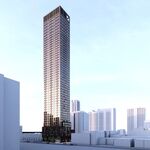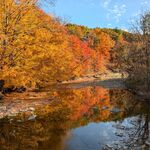Toronto's New Street Furniture on it's way...
I cant seem to find any previous thread on this subject, so thought it worthwhile to start a new one...
From the City's website:
(UPDATE) Mayor David Miller to unveil City’s new street furniture
Mayor David Miller will be joined by Ian Greenberg, President and CEO, Astral Media Inc. and Luc Sabbatini, President, Astral Media Outdoor, to unveil prototypes of the City’s new coordinated street furniture.
This project was one of several developed through the City’s Clean and Beautiful City Initiative, aimed at improving the quality of the City’s public spaces through better coordination and design excellence.
Date: Monday, June 9, 2008
Time: 10:00am
Location: Toronto City Hall, 100 Queen Street West Nathan Phillips Square (near front entrance of building)
"It is my pleasure to introduce the prototypes for Toronto's new street furniture program. The sidewalks are where people become Torontonians. The public realm allows us to come together as citizens, residents, and visitors to enjoy, discover and appreciate this wonderful city. The Coordinated Street Furniture program will not only improve, but elevate and celebrate Toronto's urban beauty ."
- Mayor David Miller
Introducing Toronto's New Street Furniture
The City entered into an agreement with Astral Media last fall through a comprehensive Request for Proposals (RFP) process. City staff, with advice from a variety of technical experts, Design Jury members and public input received during the proposal evaluation period last year when Council was considering the bids, have been working with Astral, Jeremy Kramer, Principal, Kramer Design Associates, the award-winning Toronto designer of its street furniture elements, and its chief logistical consultant, the Toronto firm IBI Group.
The renderings follow the evolution of Toronto’s street furniture from its existing state through to the latest design refinements. Emphasis is on how the elements initially proposed by Astral have been developed and refined to the current prototype stage.
The goal is to incorporate refinements which improve the aesthetics, functionality and ergonomics of the various street furniture elements. The coordinated street furniture comprises a range of transit shelters, litter/recycling receptacles, tourist/area information pillars, public notice structures, benches, bicycle parking stands, multi-publication boxes and automated public washrooms (coming in 2009).
Installing New Street Furniture
Installation of the new street furniture on Toronto’s streets will begin this summer and continue over the next 20 years. The elements are of high quality in both design and materials, and for the first time, Toronto will have compatible street furniture elements designed to work together that are functional, adaptable, incorporate sustainability features and will address the City’s varied urban form and scale. By following the “Vibrant Streets†placement guidelines, the street furniture will be installed on the City’s sidewalks and boulevards in a manner that enhances its function and accessibility, and respects the needs of pedestrians of all types.
Project Overview
View Street Furniture Launch Backgrounder
"Vibrant Streets" – Street Furniture Placement
Equally important to the substantial elevation in design quality of the street furniture elements themselves is the care and attention to detail being applied under this program in locating them on Toronto streets to enhance and improve the overall pedestrian realm.
City Council Approvals
City Council, at its meeting of May 23, 24 and 25, 2007, adopted the staff report and the Executive Committee recommendations that authorized award of the contract to Astral Media Outdoor LP. The City entered into a 20 year Agreement with Astral Media Outdoor LP for the supply, manufacture, installation and maintenance of nearly 26,000 pieces, which took effect on September 1, 2007. In addition, the direct revenues to the City from this program are being applied to enhance and beautify the City’s public places, through such initiatives as increased maintenance of street trees, development of tourist wayfinding, landscaping City boulevards and neighbourhood beautification projects. Previous Council consideration and approvals initiating the program and establishing its design and policy directions are also available.




